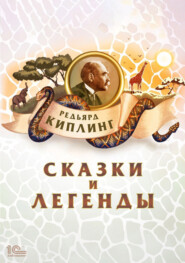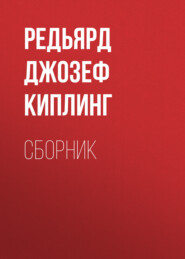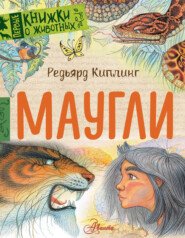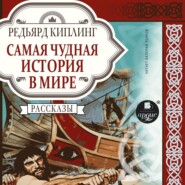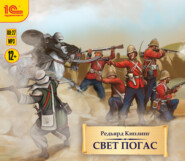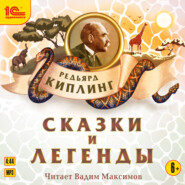По всем вопросам обращайтесь на: info@litportal.ru
(©) 2003-2024.
✖
Сказки / Fairy Tales. Уровень 1
Настройки чтения
Размер шрифта
Высота строк
Поля
That made the Horse and the Dog and the Ox very angry, and they discussed the situation with the Camel on the edge of the Desert. But the Camel chewed milkweed and laughed at them. Then he said ‘Humph!’ and went away again.
Presently the Djinn appeared. He was in charge of[10 - in charge of – в ответе за] all deserts. The Djinn rolled in a cloud of dust (Djinns always travel that way because it is magic), and he stopped to talk to the Three.
‘Djinn of All Deserts,’ said the Horse, ‘is it right for anyone to be idle’
‘Certainly not,’ said the Djinn.
‘Well,’ said the Horse, ‘there’s a Camel in the middle of your Howling Desert with a long neck and long legs, and he does not work at all. He doesn’t want to trot.’
‘Whew!’ said the Djinn and whistled, ‘that’s my Camel! What does he say about it?’
‘He says “Humph!”’ said the Dog; ‘and he doesn’t want to fetch and carry.’
‘Does he say anything else?’
‘Only “Humph!”; and he doesn’t want to plough,’ said the Ox.
‘Very good,’ said the Djinn. ‘I’ll humph him if you wait a minute.’
The Djinn rolled himself up in his dust-cloak, and flew away. He found the Camel most idle. The Camel looked at his own reflection in a pool of water.
‘My friend,’ said the Djinn, ‘they say you don’t work. Is it true?’
‘Humph!’ said the Camel.
The Djinn sat down, with his chin in his hand, and began to think. The Camel looked at his own reflection in the pool of water again.
‘I’ll give you three tasks on Monday morning,’ said the Djinn.
‘Humph!’ said the Camel.
‘Why do you say ‘Humph!’?’ asked the Djinn; ‘I want you to work.’
And the Camel said ‘Humph!’ again. But suddenly he saw his back and was afraid: his back puffed up into a great big humph.
‘Do you see that?’ said the Djinn. ‘That’s your own humph. You don’t work, and you have it! Now begin to work!’
‘How can I work,’ asked the Camel, ‘with this humph on my back?’
‘Today is Thursday. You will be able to work now for three days without any food’ said the Djinn, ‘because you missed three days – Monday, Tuesday and Wednesday. You can live on your humph. Come out of the Desert and go to the Three. Begin to work! And behave yourself!’
And the Camel went away to join the Three. And from that day to this the Camel always wears a humph. But he doesn’t know how to behave.
How the Rhinoceros got his skin
Once upon a time, on an uninhabited island on the shores of the Red Sea, there lived a Parsee. And the Parsee lived by the Red Sea with nothing but his hat, from which the rays of the sun were reflected, and his knife and a cooking-stove. And one day he took flour and water and currants and plums and sugar and things, and made himself a cake. The cake was two feet across and three feet thick. The Parsee put it on the stove, and he baked it. He baked it till it was all brown and smelt most sentimental.
But when he wanted to eat it there came down to the beach a Rhinoceros with a horn on his nose, two piggy eyes, and bad manners. In those days the Rhinoceros’s skin was quite tight. There were no wrinkles in it anywhere. He had no manners then, and he has no manners now, and he never will have any manners. He said, ‘How!’ and the Parsee left that cake and climbed to the top of a palm tree with his hat, from which the rays of the sun were reflected. The Rhinoceros upset the oil-stove with his nose. The cake rolled on the sand, and he spiked that cake on the horn of his nose, and he ate it. And he went away. Then the Parsee came down from his palm-tree.
Five weeks later, the Red Sea was very hot, and everybody took off all the clothes they had. The Parsee took off his hat; but the Rhinoceros took off his skin and carried it over his shoulder as he came down to the beach to bathe. In those days it buttoned underneath with three buttons and looked like a waterproof. He said nothing about the Parsee’s cake. The Rhinoceros waddled straight into the water and blew bubbles through his nose. His skin was on the beach.
Presently the Parsee came by and found the skin. He smiled, and the smile ran all round his face two times. Then he danced three times round the skin and rubbed his hands. Then he went to his camp and filled his hat with cake-crumbs[11 - cake-crumbs – крошки]. You know, the Parsee never ate anything but cake, and never swept out his camp. He took that skin, and he shook that skin, and he scrubbed that skin, and he rubbed that skin just as full of old, dry, stale, tickly cake-crumbs and some burned currants. Then he climbed to the top of his palm-tree and waited.
The Rhinoceros came out of the water and put it on. He buttoned it up with the three buttons, and it tickled like cake-crumbs in bed. Then he wanted to scratch, but that made it worse[12 - that made it worse – стало ещё хуже]. Then he lay down on the sands and rolled and rolled and rolled, and every time he rolled the cake-crumbs tickled him worse and worse and worse.
Then he ran to the palm-tree and rubbed and rubbed and rubbed himself against it. He rubbed so much and so hard that he rubbed his skin into a great fold over his shoulders, and another fold underneath. He rubbed some more folds over his legs. But it didn’t work. The cake-crumbs were inside his skin and they tickled. So he went home, very angry indeed and horribly scratchy.
From that day to this every rhinoceros has great folds in his skin and a very bad temper, because he has many cake-crumbs inside.
How the Leopard got his spots
Once upon a time, the Leopard lived in a place called the High Veldt. There were sand and sandy-coloured rock and tufts of sandy-yellowish grass in that place. The Giraffe and the Zebra and the Eland and the Koodoo and the Hartebeest lived there. They were exclusively sandy-yellow-brownish all over; but the Leopard was the exclusivest sandiest-yellowish-brownest of them all. He was the greyish-yellowish catty-shaped beast in that place. This was very bad for the Giraffe and the Zebra and the rest of them, because he liked to lie down by a yellowish-greyish-brownish stone or clump of grass, and when the Giraffe or the Zebra or the Eland or the Koodoo or the Bush-Buck or the Bonte-Buck came by he jumped and caught them. He did so! And, also, there was an Ethiopian with bows and arrows (a exclusively greyish-brownish-yellowish man), who lived on the High Veldt with the Leopard. The two hunted together – the Ethiopian with his bows and arrows, and the Leopard exclusively with his teeth and claws – till the Giraffe and the Eland and the Koodoo and the Quagga and all the rest of them didn’t know which way to jump. They didn’t indeed!
After a long time, the animals learned to avoid anything that looked like a Leopard or an Ethiopian. And bit by bit[13 - bit by bit – мало-помалу] (the Giraffe began it, because his legs were the longest) they went away from the High Veldt. They scuttled for days and days and days till they came to a great forest, exclusively full of trees and bushes and stripy, speckly shadows, and there they hid.
After another long time, the Giraffe grew blotchy, and the Zebra grew stripy, and the Eland and the Koodoo grew darker, with little wavy grey lines on their backs like bark on a tree trunk. Though you could hear them and smell them, you could very seldom see them: only when you knew precisely where to look. They had a beautiful time in that forest, while the Leopard and the Ethiopian were puzzled. Where are their breakfasts and their dinners? At last the Leopard and the Ethiopian were so hungry that they ate rats and beetles and rock-rabbits. And they both had a terrible stomach-ache.
Then they met a Baboon, who is the wisest animal in all South Africa.
The Leopard asked the Baboon (and it was a very hot day),
‘Where are all the animals?’
And the Baboon winked. He knew.
The Ethiopian asked the Baboon,
‘Can you tell me the present habitat of the animals?’
And the Baboon winked. He knew.
Then the Baboon said,
‘The animals went into other place; and my advice to you, Leopard, is to go there as soon as you can.’
And the Ethiopian said,
‘That is all very fine, but I wish to know where they are.’
Then the Baboon said,
‘The animals changed their place, because it was high time for a change; and my advice to you, Ethiopian, is to change as soon as you can.’
That puzzled the Leopard and the Ethiopian. They went away and after many days they saw a great, high, tall forest full of tree trunks and shadows.
‘What is this,’ said the Leopard, ‘that is so exclusively dark, and yet so full of little pieces of light?’
‘I don’t know,’ said the Ethiopian, ‘but I can smell Giraffe, and I can hear Giraffe, but I can’t see Giraffe.’







